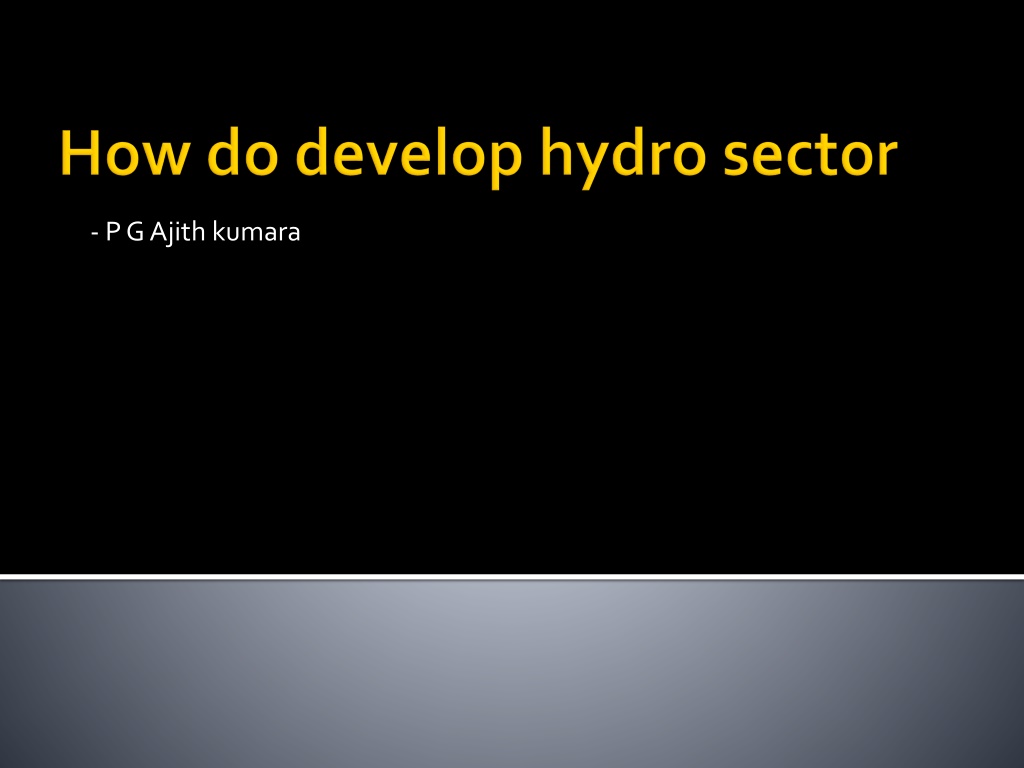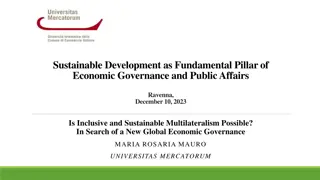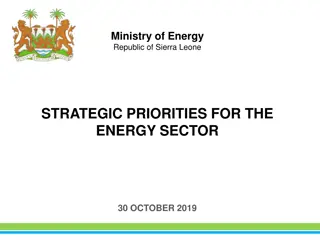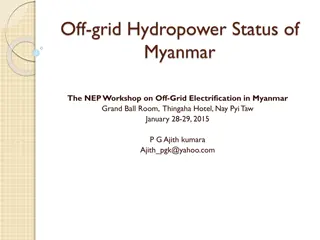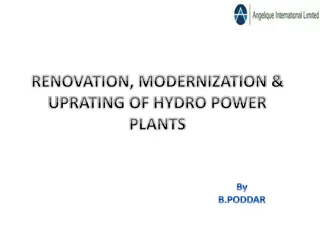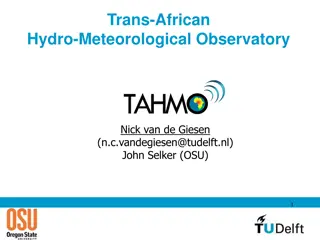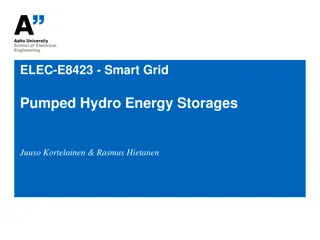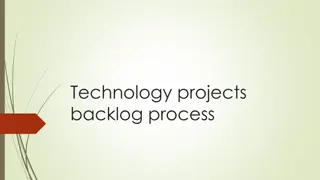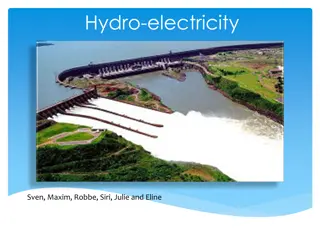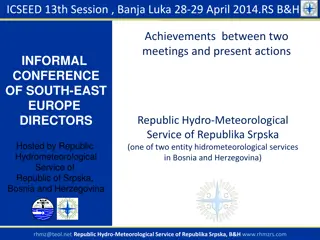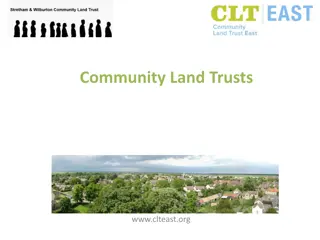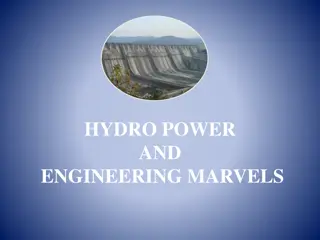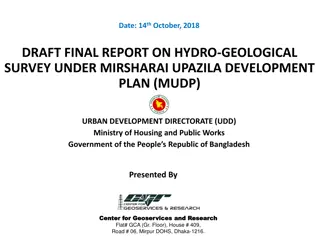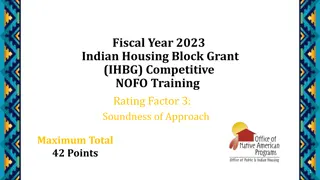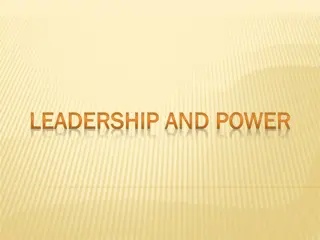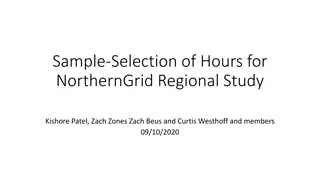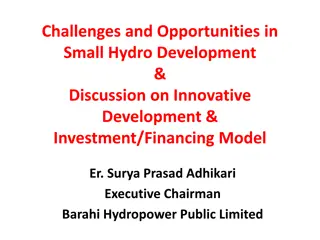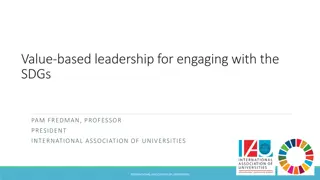Sustainable Community-Based Hydro Power Projects Development Framework
This framework outlines steps for developing sustainable community-based hydro power projects. It covers aspects like capacity building, partner identification, monitoring, grid connection, registration, quality control, and certification at state/district levels. It emphasizes building confidence among decision-makers and stakeholders, while focusing on technical feasibility, environmental impact, and financial evaluation.
- Sustainable development
- Hydro power projects
- Community-based initiatives
- Capacity building
- Renewable energy
Download Presentation

Please find below an Image/Link to download the presentation.
The content on the website is provided AS IS for your information and personal use only. It may not be sold, licensed, or shared on other websites without obtaining consent from the author. Download presentation by click this link. If you encounter any issues during the download, it is possible that the publisher has removed the file from their server.
E N D
Presentation Transcript
Introduce strong community/ business concept Build capacity of non technical aspects Build capacity of technical Aspects Identify partners Monitoring & Evaluation Grid connection of VHP
Registration Electricity Consumer society (ECS), business, May not assess the technical feasibility at this stage Develop code of practice Community based HPP-Legislation, minutes of each meeting, quarterly/annual budget, bank account, receipt book Private HPP Tariff structure, ECS / Business owner(s) is the owner of the HPP
Monitor and quality control Environment, performances, reasonable tariff etc. Avoid clashes for limited hydro potential Electricity, drinking, irrigation, and other application Obtain support from external parties Donation, grant, loan Approvals Project design, civil construction, overhead lines (local government, Dept. of forestry /wild life, irrigation, archaeological)
State/ district level project certification Feasibility report including socio-economical, technical , environmental information Other supporting documents Private or community based project Site inspection Visually inspection the site Interviews stake holders Issue certificate Technical, social, financially and environmentally comply Out source external resource person Start implementation, money collection (community based project), bank loan
Develop confidence of decision makers Politicians, local government, financing institutes, equipment manufacturers Study tours, awareness program, pilot project Train facilitators Book keeping, assessing feasibility study report Financially evaluation, Environment impact assessment Develop infrastructure Develop/ translate literature, documentary
Develop confidence of technology Study tours, awareness program, pilot project Train on appropriate technology Site survey and potential analyse System sizing (civil construction, penstock, turbine, Distribution lines) Different types of turbines designing and manufacturing Control technology
Supporting information Monthly rainfall data (10 years) Topographical maps Identify potential areas/ region National grid expansion plan Technology for automatic controlling Electronic technology Hydraulics technology Technical infrastructure Wheel balancing, turbine test bench
Presently HP practitioner (manufacturers, developers, funder) Financing institutes Expert for the all aspects Organization, Individuals, national and international level
Non technical aspects Transparent cash handling and record keeping Beneficiaries energy usage Community dispute (between ethnics, income level) Technical aspects Performance data recording O & M practices Third-party evaluation Evaluate technical & non technical aspects
Project initial investment increase 20% to 50% to go to high reliable and efficient system Villagers may not be bear up such a increment Available optimum potential tapping In future energy demand Financing support For initial investment Monitoring and supervision
Facilitate and joint all sector Technical, financing, social and environment etc Subsidy for HP Based on capacity, Nos. Of HH and project cost Develop infrastructure Testing and certification Secondary data, potential and appropriate areas/region Soft loan for micro financing institute Encourage on off peak energy affectively use Lighting and audio / video consume around 30% of generation Battery charging, food processing, agricultural process
SPP/Mini-grid Regulatory framework Develop rules and regulations under electricity law that provide clarity for mini-grids/small power producers: licensing, tariffs, grid interconnection standardized power purchase agreements, and 13
